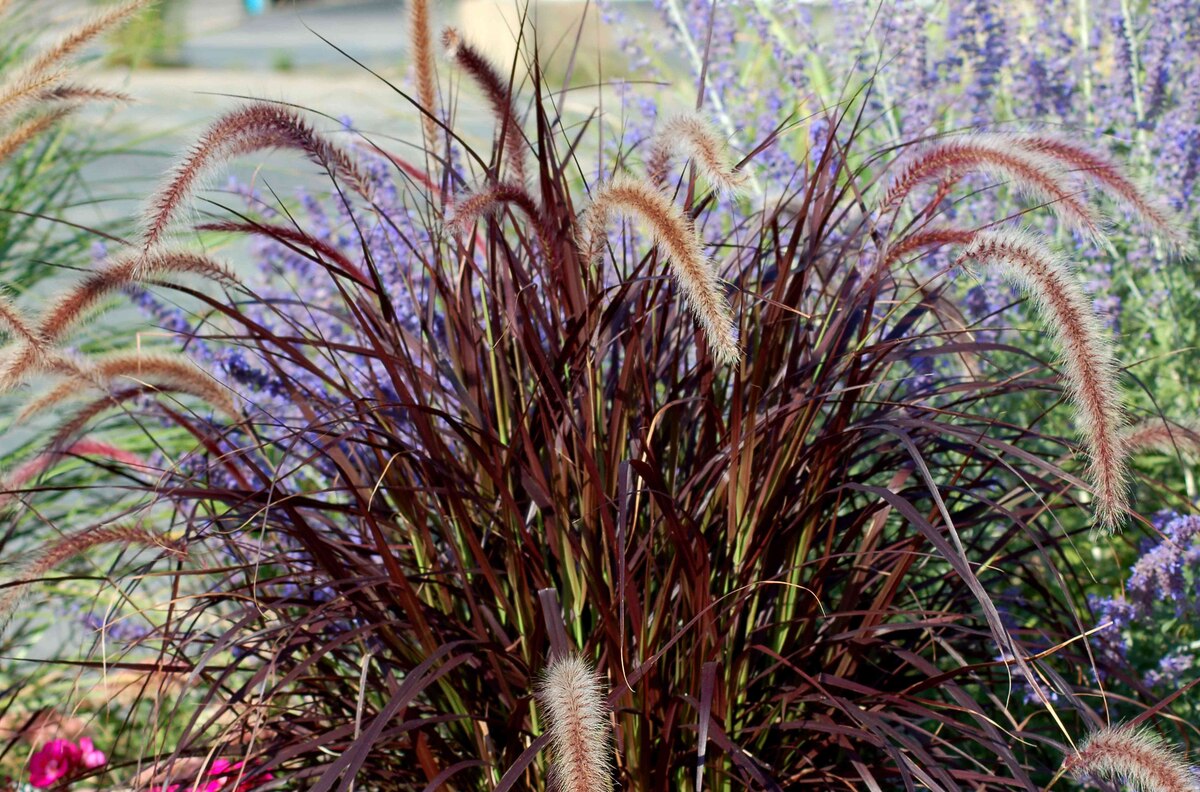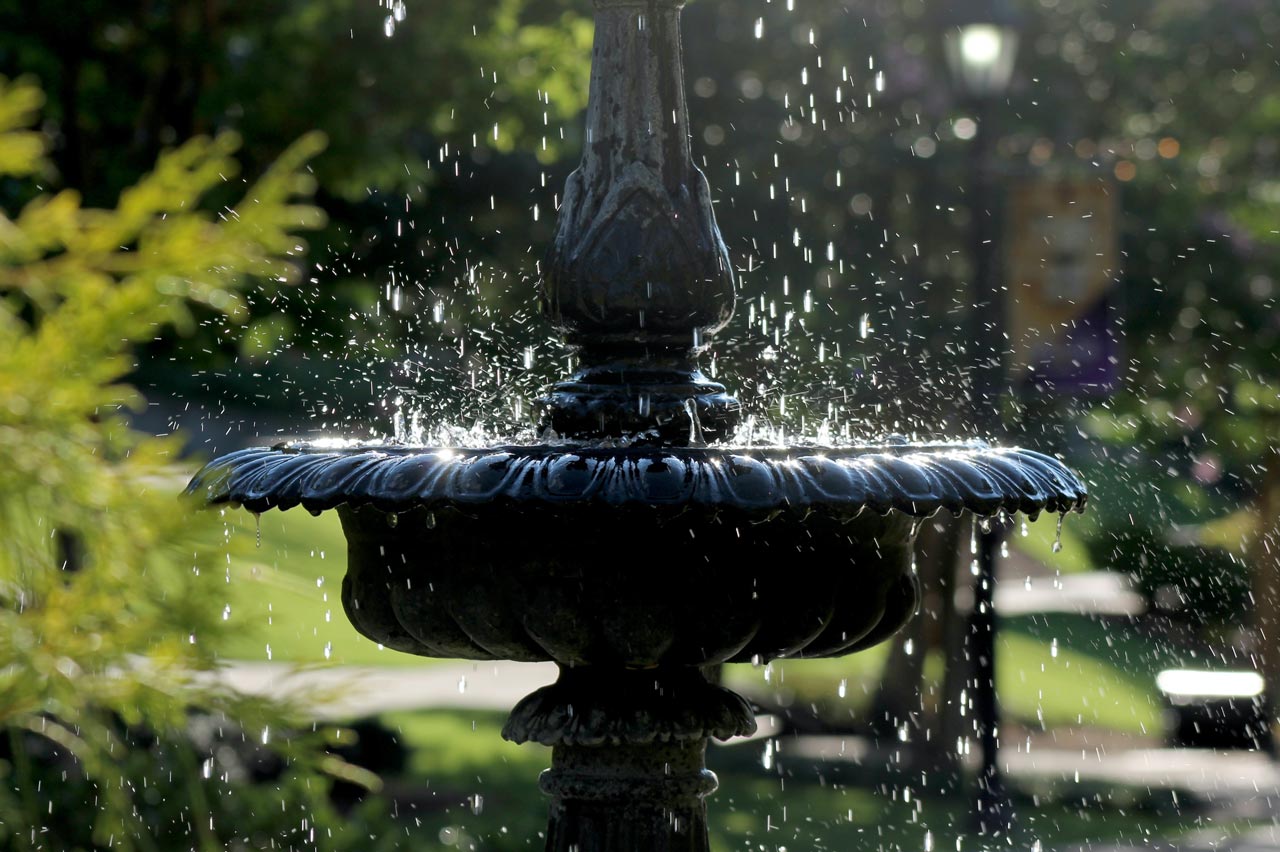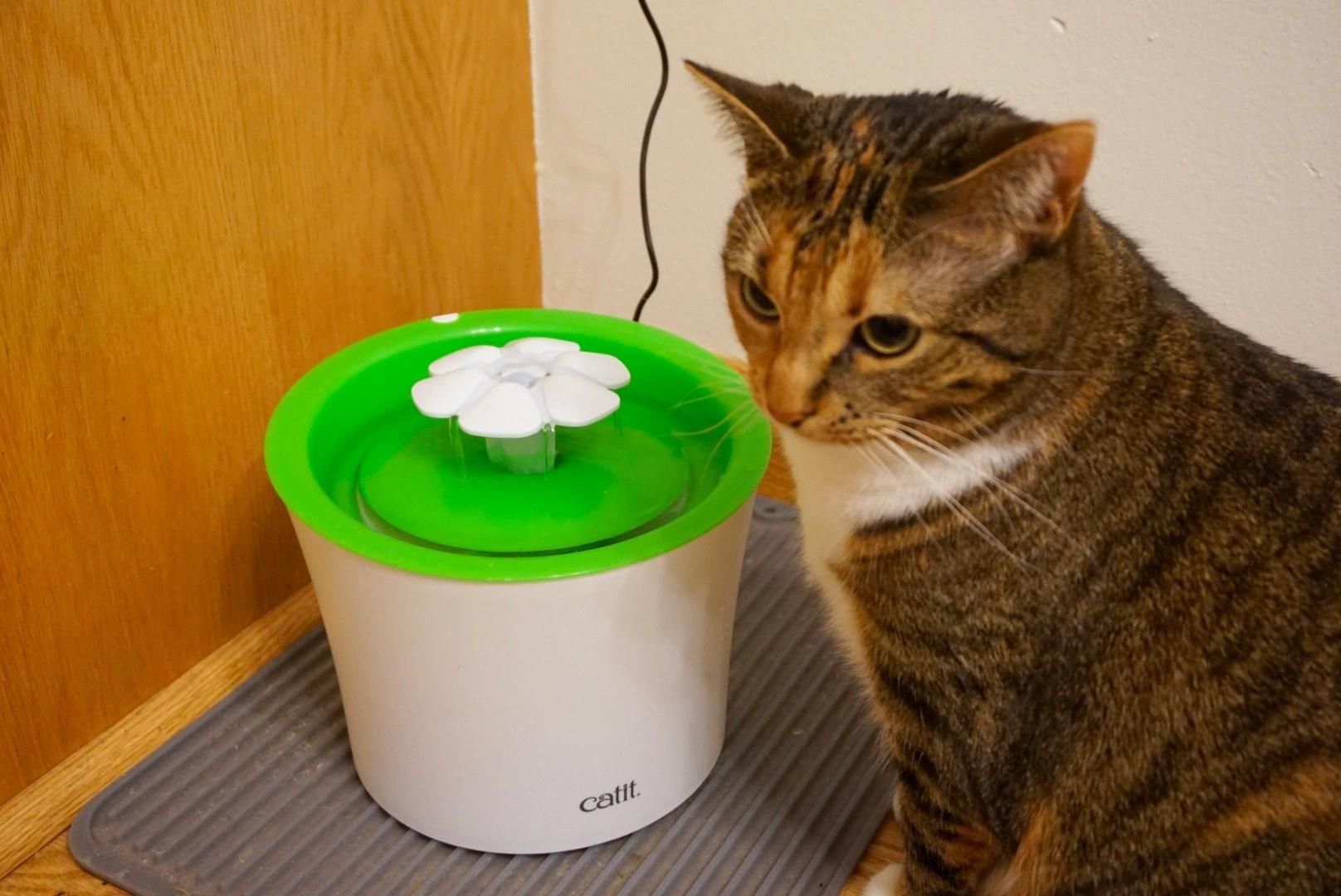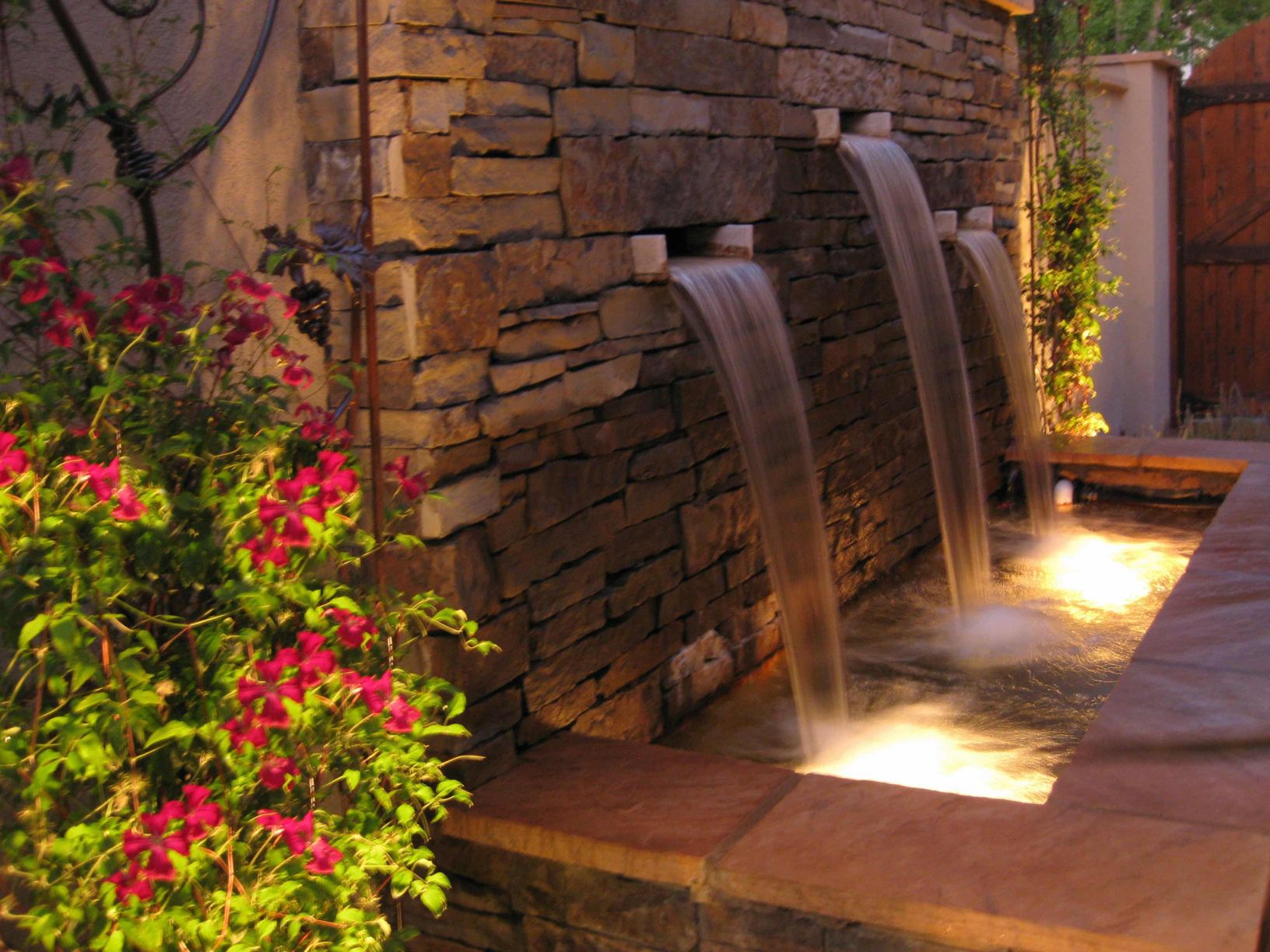Home>Gardening & Outdoor>Landscaping Ideas>What Is Fountain Grass


Landscaping Ideas
What Is Fountain Grass
Modified: August 27, 2024
Discover creative landscaping ideas with fountain grass. Learn how to incorporate this versatile plant into your outdoor space for a stunning and low-maintenance garden.
(Many of the links in this article redirect to a specific reviewed product. Your purchase of these products through affiliate links helps to generate commission for Storables.com, at no extra cost. Learn more)
Introduction
Fountain grass, scientifically known as Pennisetum, is a versatile and visually captivating plant that has gained popularity in landscaping and gardening. This ornamental grass is prized for its graceful, cascading foliage that resembles a cascading fountain, hence its name. With its striking appearance and low-maintenance nature, fountain grass has become a staple in gardens, parks, and urban landscapes around the world.
Fountain grass is renowned for its ability to add texture, movement, and a touch of elegance to outdoor spaces. Its feathery plumes sway gently in the breeze, creating a mesmerizing effect that adds a sense of tranquility and charm to any setting. Whether used as a focal point in a garden bed, as a border plant along walkways, or in decorative containers, fountain grass has the remarkable ability to enhance the visual appeal of any landscape.
This resilient plant is also valued for its adaptability to various climates and soil conditions, making it a popular choice for both experienced gardeners and novices alike. Its ability to thrive in diverse environments, from arid regions to more temperate zones, makes it a versatile option for landscaping projects in a wide range of geographical locations.
In addition to its aesthetic appeal and adaptability, fountain grass is celebrated for its low maintenance requirements. Once established, it is relatively drought-tolerant and requires minimal care, making it an attractive option for those seeking a beautiful yet hassle-free addition to their outdoor spaces.
As we delve deeper into the world of fountain grass, we will explore its characteristics, different types, uses in landscaping, cultivation tips, maintenance practices, and potential issues to consider. By gaining a comprehensive understanding of this remarkable plant, you will be equipped with the knowledge to incorporate fountain grass into your landscaping endeavors, adding a touch of natural elegance and allure to your outdoor environment.
Key Takeaways:
- Fountain grass is a visually captivating and low-maintenance plant that adds elegance and charm to outdoor spaces. Its graceful foliage, ornamental plumes, and adaptability make it a valuable asset for landscaping projects.
- With its diverse types and uses, fountain grass offers versatile solutions for accentuating focal points, defining borders, addressing erosion control, and promoting wildlife habitat. Its low-water requirements and minimal maintenance needs make it a sustainable landscaping choice.
Read more: What To Plant With Purple Fountain Grass
Characteristics of Fountain Grass
Fountain grass, with its distinctive features and remarkable attributes, stands out as a captivating addition to any landscape. Understanding its key characteristics is essential for appreciating its beauty and harnessing its potential in landscaping and gardening projects.
1. Graceful Foliage
The most striking feature of fountain grass is its graceful, cascading foliage, which forms a fountain-like shape, hence its name. The long, slender leaves arch outward and downward, creating an elegant and mesmerizing effect as they sway gently in the breeze. This unique foliage adds a sense of movement and fluidity to outdoor spaces, making fountain grass a visually captivating choice for landscaping.
2. Ornamental Plumes
One of the most alluring characteristics of fountain grass is its ornamental plumes, which emerge in late summer and persist throughout the fall. These feathery, bottlebrush-like plumes, often tinged with hues of pink, white, or burgundy, add a touch of whimsy and charm to the plant. As they sway in the wind, the plumes create a dynamic visual display, further enhancing the appeal of fountain grass in garden beds, borders, and containers.
3. Versatile Size
Fountain grass exhibits a versatile size range, with different cultivars varying in height and spread. Some varieties remain compact, reaching a height of around 18 inches, while others can soar to over 5 feet in height. This variability allows for flexibility in landscaping design, as fountain grass can be utilized as a ground cover, border plant, or eye-catching focal point, depending on the specific cultivar chosen.
Read more: When To Trim Fountain Grass
4. Drought Tolerance
Another notable characteristic of fountain grass is its resilience in the face of drought and heat. Once established, this plant demonstrates impressive drought tolerance, making it an ideal choice for landscapes in arid or semi-arid regions. Its ability to thrive in dry conditions while maintaining its ornamental appeal makes it a valuable addition to water-wise landscaping projects.
5. Adaptability
Fountain grass exhibits adaptability to a range of soil types and environmental conditions. It can flourish in full sun to partial shade, making it suitable for various garden settings. Additionally, it is known for its ability to withstand windy conditions, further adding to its versatility in different outdoor environments.
Understanding these key characteristics of fountain grass provides valuable insight into its aesthetic appeal, functional versatility, and resilience. By leveraging these attributes, landscapers and gardeners can harness the beauty of fountain grass to create visually captivating and sustainable outdoor spaces.
Types of Fountain Grass
Fountain grass encompasses a diverse array of cultivars, each offering unique characteristics that cater to different landscaping preferences and environmental conditions. Understanding the various types of fountain grass is essential for selecting the most suitable cultivar to achieve specific aesthetic goals and address site-specific requirements. Here are some notable types of fountain grass:
1. Pennisetum alopecuroides (Fountain Grass)
Pennisetum alopecuroides, commonly known as fountain grass, represents the classic and widely recognized variety of this ornamental grass. It typically features graceful, arching foliage and produces fluffy, bottlebrush-like plumes in late summer. This variety is available in different cultivars, offering variations in height, foliage color, and plume characteristics, allowing for diverse landscaping applications.
Read more: What Is A Water Fountain
2. Pennisetum setaceum 'Rubrum' (Purple Fountain Grass)
The 'Rubrum' cultivar of Pennisetum setaceum, also known as purple fountain grass, is celebrated for its striking foliage that emerges in shades of burgundy, purple, or red. This vibrant coloration adds a bold and captivating element to garden beds, borders, and containers. The distinctive hue of its foliage, combined with its graceful form, makes it a popular choice for adding visual interest and contrast to landscaping compositions.
3. Pennisetum orientale (Oriental Fountain Grass)
Pennisetum orientale, or oriental fountain grass, is prized for its compact size and delicate, finely textured foliage. This variety is well-suited for smaller garden spaces or as a ground cover, offering a subtle yet elegant presence. Its graceful appearance and low-maintenance nature make it an attractive option for adding a touch of softness and sophistication to garden borders and rock gardens.
4. Pennisetum advena 'Eaton Canyon' (Dwarf Fountain Grass)
The 'Eaton Canyon' cultivar of Pennisetum advena, known as dwarf fountain grass, is characterized by its compact size and mounded growth habit. This variety is ideal for creating neat and well-defined borders, edging pathways, or adding visual interest to confined garden spaces. Its diminutive stature, combined with its ornamental plumes, makes it a versatile choice for enhancing the charm of smaller landscapes.
5. Pennisetum setaceum 'Purpureum' (Red Fountain Grass)
Pennisetum setaceum 'Purpureum', commonly referred to as red fountain grass, is renowned for its vibrant red or burgundy foliage, adding a bold and dramatic element to outdoor settings. This cultivar's eye-catching coloration, coupled with its graceful form and ornamental plumes, makes it a popular choice for creating focal points, accentuating landscape features, or infusing vibrant hues into garden compositions.
By familiarizing oneself with the diverse types of fountain grass, landscapers and gardeners can make informed decisions when selecting cultivars that align with their design objectives and environmental considerations. Each type offers distinct visual appeal, growth habits, and adaptability, providing ample opportunities to integrate fountain grass into a wide range of landscaping projects.
Read more: When To Plant Purple Fountain Grass
Uses of Fountain Grass
Fountain grass, with its versatile and visually captivating nature, offers a myriad of uses in landscaping and garden design. Its unique characteristics and adaptability make it a valuable addition to outdoor spaces, serving both aesthetic and functional purposes. Here are several compelling uses of fountain grass:
-
Accent Planting: The graceful form and ornamental plumes of fountain grass make it an ideal choice for accentuating specific areas within a landscape. Whether used as a standalone focal point or incorporated into mixed plantings, its cascading foliage and striking plumes draw attention and add a touch of elegance to garden beds, borders, and container arrangements.
-
Border and Edging: Fountain grass can be utilized to create defined borders and edges within garden beds and along pathways. Its arching foliage and varying heights provide a soft and natural delineation, adding structure and visual interest to the landscape while seamlessly blending with surrounding plants and hardscape elements.
-
Mass Plantings: When planted in mass groupings, fountain grass can create a stunning visual impact, particularly when its plumes sway collectively in the breeze. This approach is effective in large-scale landscaping projects, where the feathery texture and graceful movement of the grass contribute to a sense of rhythm and flow throughout the outdoor environment.
-
Container Gardening: Due to its compact size and ornamental appeal, fountain grass is well-suited for container gardening. Whether featured in decorative pots on patios, balconies, or outdoor living spaces, it adds a dynamic and textural element to container arrangements, enhancing the overall aesthetic of the area.
-
Erosion Control: In landscapes prone to soil erosion, fountain grass can serve a functional role in stabilizing slopes and embankments. Its fibrous root system helps bind the soil, reducing the risk of erosion while adding a touch of greenery to areas that require stabilization.
-
Wildlife Habitat: The feathery plumes of fountain grass can attract birds, particularly in the fall when the seeds are ripe. This makes it a valuable addition to wildlife-friendly landscapes, providing shelter and foraging opportunities for birds and small mammals.
-
Low-Water Landscapes: In regions with water conservation requirements, fountain grass is an excellent choice for low-water or xeriscape landscapes. Its drought tolerance and minimal water needs make it an eco-friendly option for creating visually appealing outdoor environments while promoting water efficiency.
By leveraging the diverse uses of fountain grass, landscapers and gardeners can harness its aesthetic allure and functional benefits to enhance the beauty and sustainability of outdoor spaces. Whether employed as a focal point, border plant, erosion control measure, or wildlife-friendly feature, fountain grass offers a versatile and visually captivating solution for a wide range of landscaping applications.
How to Grow Fountain Grass
Growing fountain grass is a rewarding endeavor that allows individuals to introduce a stunning and low-maintenance ornamental grass to their outdoor spaces. Whether embarking on a new landscaping project or seeking to enhance an existing garden, cultivating fountain grass can be a relatively straightforward process when following essential guidelines. Here's a comprehensive overview of the steps involved in successfully growing fountain grass:
Selecting an Ideal Location
Choose a well-drained location with full sun to partial shade for planting fountain grass. Ensure that the selected area receives adequate sunlight, as this is crucial for the plant's growth and the development of its characteristic plumes. Additionally, consider the overall aesthetic and functional objectives of the landscape to determine the most suitable placement for fountain grass within the outdoor environment.
Preparing the Soil
Prepare the soil by loosening it to a depth of 12 to 15 inches and incorporating organic matter, such as compost, to improve its fertility and drainage. Fountain grass thrives in moderately fertile soil with good drainage, so amending the soil with organic material can create an optimal growing environment for the plant.
Read more: What Are The Best Outdoor Fountains
Planting Fountain Grass
When planting fountain grass, ensure that the root ball of the plant is level with the surrounding soil surface. Space multiple plants according to the specific cultivar's recommended spacing guidelines, typically ranging from 18 to 36 inches apart, to allow for adequate air circulation and future growth. Water the newly planted grass thoroughly to help establish its root system in the soil.
Watering and Maintenance
During the initial establishment period, provide regular watering to ensure that the soil remains consistently moist but not waterlogged. Once established, fountain grass exhibits impressive drought tolerance and requires minimal supplemental watering. However, during prolonged dry spells, providing occasional deep watering can help maintain the plant's vigor and ornamental appeal.
Fertilization
Fountain grass generally does not require frequent fertilization. However, applying a balanced, slow-release fertilizer in spring can support healthy growth and vibrant foliage. Follow the specific fertilizer recommendations based on the soil's nutrient levels and the plant's growth requirements.
Division and Propagation
As fountain grass matures, it may benefit from periodic division to rejuvenate its growth and maintain its vigor. Dividing the plant every few years in early spring can help prevent overcrowding and promote the development of new shoots. Additionally, fountain grass can be propagated from seed, providing an opportunity to expand its presence in the landscape or share its beauty with others.
By following these essential steps and best practices, individuals can cultivate thriving and visually captivating fountain grass in their outdoor spaces. With its graceful form, ornamental plumes, and low-maintenance nature, fountain grass stands as a remarkable addition to gardens, landscapes, and urban environments, offering enduring beauty and charm throughout the seasons.
Read more: What Is The Best Water Fountain For Cats
Maintenance of Fountain Grass
Maintaining fountain grass is relatively straightforward, requiring minimal effort while yielding enduring visual appeal throughout the seasons. By adhering to essential maintenance practices, individuals can ensure the health, vigor, and ornamental beauty of this versatile ornamental grass. Here are the key maintenance tasks to consider when caring for fountain grass:
Pruning and Deadheading
Regular pruning and deadheading are essential for preserving the aesthetic appeal of fountain grass. In late winter or early spring, it is advisable to trim back the previous year's growth to a few inches above the ground to encourage fresh, new growth. Additionally, removing spent plumes as they fade can promote a tidy appearance and stimulate the production of new plumes, prolonging the plant's ornamental display.
Weed Control
Maintaining a weed-free environment around fountain grass is crucial for its optimal growth and visual impact. Regularly inspect the area surrounding the plant and promptly remove any weeds that may compete for nutrients and moisture. Applying a layer of mulch around the base of the plant can help suppress weed growth while conserving soil moisture.
Watering
Once established, fountain grass demonstrates impressive drought tolerance and requires minimal supplemental watering. However, during prolonged dry spells, particularly in regions with intense summer heat, providing occasional deep watering can help maintain the plant's vigor and prevent the foliage from wilting. It is important to strike a balance, avoiding overwatering, which can lead to root rot and other issues.
Read more: How To Seal A Water Fountain
Division and Renewal
Periodic division of mature fountain grass plants can rejuvenate their growth and prevent overcrowding. Every few years, typically in early spring, carefully dig up the plant and divide the root ball into smaller sections, ensuring that each division retains healthy roots and shoots. Replant the divisions in suitable locations, incorporating organic matter into the soil to promote their establishment and vigor.
Pest and Disease Management
Fountain grass is generally resistant to pests and diseases, making it a low-maintenance addition to outdoor spaces. However, occasional inspection for signs of pest infestations or disease symptoms is advisable. Addressing any issues promptly, such as aphid infestations or fungal infections, can help maintain the plant's health and vitality.
By incorporating these maintenance practices into the care regimen for fountain grass, individuals can ensure that this ornamental grass continues to thrive and enhance the visual appeal of their landscapes. With its graceful form, resilient nature, and enduring beauty, fountain grass stands as a valuable and captivating asset in gardens, parks, and urban environments, requiring minimal upkeep while delivering lasting charm and allure.
Potential Issues with Fountain Grass
While fountain grass is prized for its resilience and ornamental appeal, it is important to be aware of potential issues that may arise when cultivating this versatile plant. By understanding and addressing these challenges, individuals can effectively maintain the health and vitality of fountain grass in their outdoor spaces.
-
Invasive Potential: Certain varieties of fountain grass, particularly Pennisetum setaceum, have been identified as invasive species in some regions. When these non-native cultivars escape cultivation, they can outcompete native vegetation and disrupt natural ecosystems. It is crucial to research and select non-invasive cultivars or native alternatives to mitigate the risk of ecological harm.
-
Seed Dispersal: Fountain grass produces abundant seeds that can disperse easily, leading to self-seeding and potential colonization of unintended areas. This prolific seed production can contribute to the spread of invasive varieties and may necessitate proactive seed management to prevent uncontrolled proliferation.
-
Fire Risk: In regions prone to wildfires, fountain grass poses a fire risk due to its high flammability. The dry, fine-textured foliage and accumulated thatch can fuel fires, particularly in arid environments. It is essential to assess the fire risk associated with fountain grass and implement appropriate measures to mitigate potential hazards.
-
Winter Hardiness: In colder climates, certain fountain grass cultivars may exhibit limited winter hardiness, leading to dieback or reduced vigor after frost or prolonged cold spells. It is advisable to select cultivars suited to the local climate and provide protective mulching or winter care as needed to enhance their cold tolerance.
-
Maintenance Challenges: While fountain grass is generally low-maintenance, periodic maintenance tasks such as pruning, deadheading, and division may be required to uphold its ornamental appeal and prevent overcrowding. Neglecting these tasks can result in diminished aesthetic quality and potential issues related to plant vigor.
By acknowledging these potential issues and implementing proactive measures to address them, individuals can cultivate fountain grass responsibly and sustainably. Whether through careful cultivar selection, seed management, fire prevention strategies, climate-appropriate choices, or diligent maintenance practices, it is possible to enjoy the beauty of fountain grass while minimizing potential drawbacks and ecological impacts.
Conclusion
In conclusion, fountain grass stands as a remarkable and versatile addition to landscaping and garden design, offering a harmonious blend of aesthetic allure, functional versatility, and low-maintenance appeal. Its graceful foliage, ornamental plumes, and adaptability to diverse environmental conditions make it a valuable asset for enhancing the visual appeal and sustainability of outdoor spaces.
Throughout this exploration of fountain grass, we have delved into its key characteristics, diverse types, compelling uses, cultivation guidelines, maintenance practices, and potential considerations. By gaining a comprehensive understanding of this ornamental grass, individuals can harness its beauty and resilience to create captivating and enduring landscapes.
Fountain grass serves as a testament to the inherent elegance and resilience of ornamental grasses, offering a dynamic and visually captivating presence in gardens, parks, urban settings, and natural landscapes. Its ability to thrive in varying climates, from arid regions to more temperate zones, underscores its adaptability and value in diverse geographical contexts.
As individuals seek to cultivate sustainable and visually appealing outdoor environments, fountain grass emerges as a compelling choice, providing opportunities for accentuating focal points, defining borders, addressing erosion control, and promoting wildlife habitat. Its low-water requirements and minimal maintenance needs further contribute to its appeal as a sustainable landscaping solution.
While being mindful of potential issues such as invasive tendencies, seed dispersal, fire risk, and winter hardiness, individuals can make informed decisions and implement responsible practices to mitigate these concerns and cultivate fountain grass in a conscientious and sustainable manner.
In essence, fountain grass embodies the artful fusion of beauty and resilience, enriching outdoor spaces with its graceful form, dynamic movement, and enduring charm. By embracing this ornamental grass in landscaping endeavors, individuals can infuse their outdoor environments with a touch of natural elegance, creating landscapes that inspire, captivate, and endure for years to come.
Frequently Asked Questions about What Is Fountain Grass
Was this page helpful?
At Storables.com, we guarantee accurate and reliable information. Our content, validated by Expert Board Contributors, is crafted following stringent Editorial Policies. We're committed to providing you with well-researched, expert-backed insights for all your informational needs.










0 thoughts on “What Is Fountain Grass”